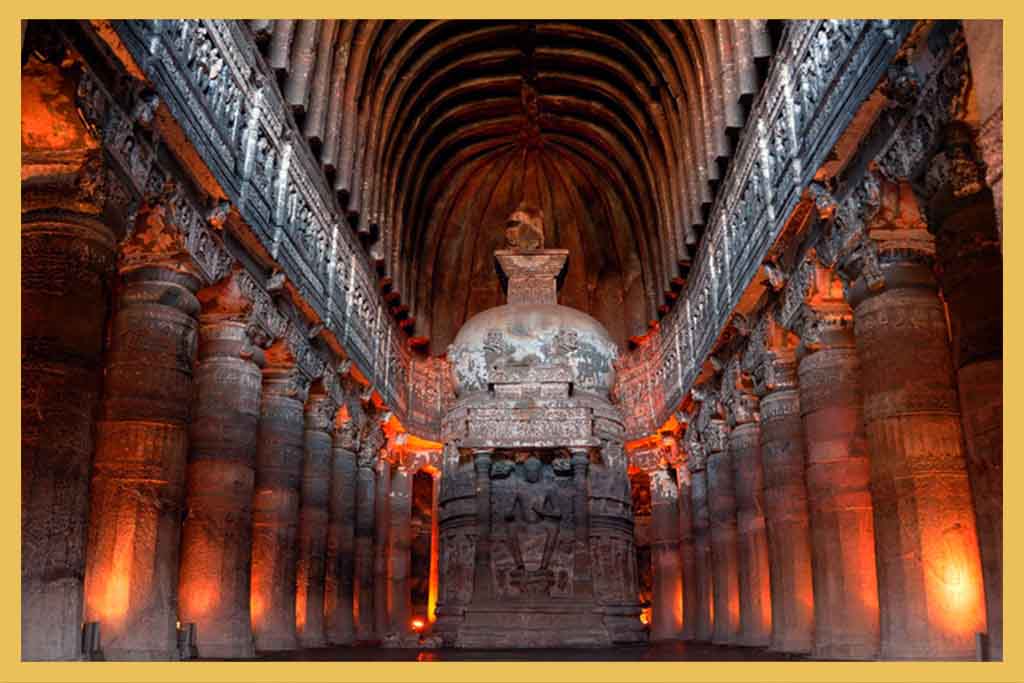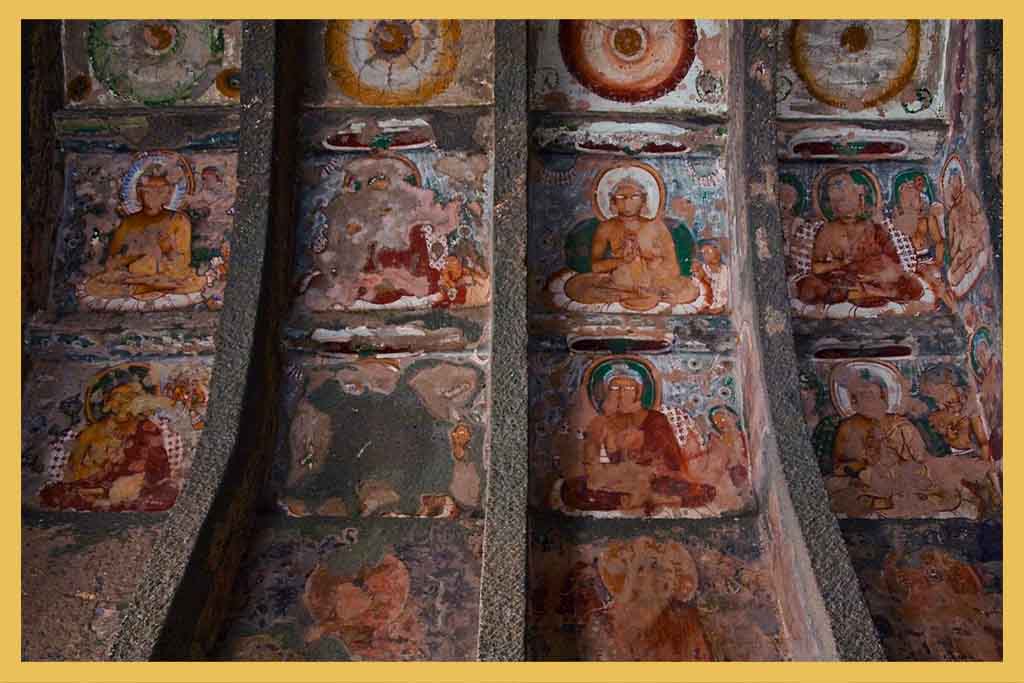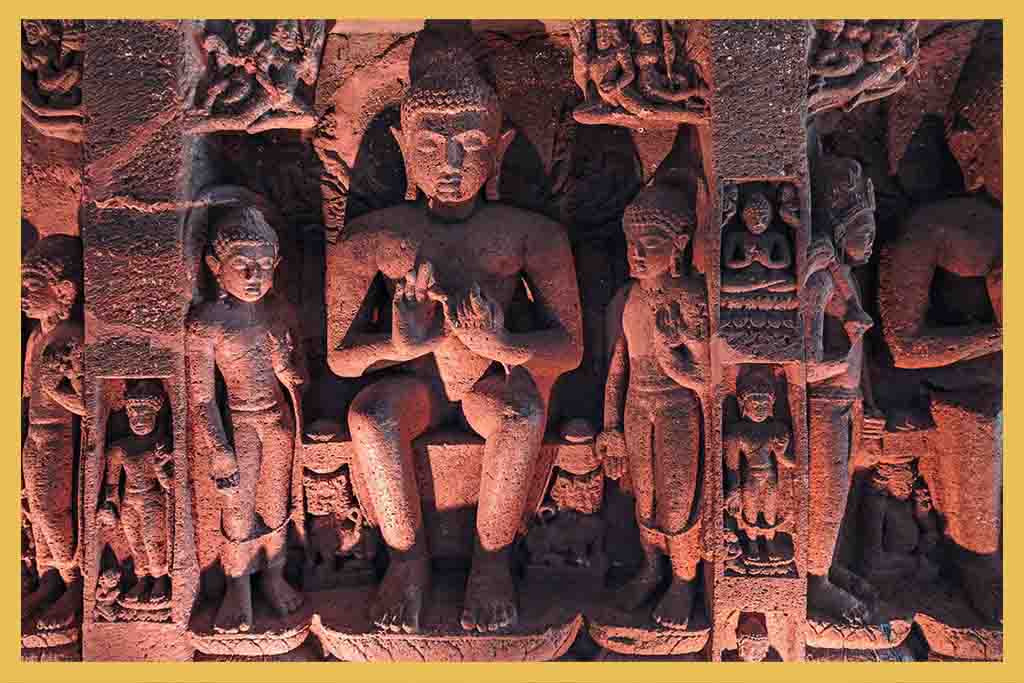An Ultimate Guide To Ajanta Caves

Are you one of those extremely keen to know about historical places? If so, you must not miss out on exploring Ajanta caves. It is a Buddhist rock-cut cave monastery and temple situated near Ajanta village, Maharashtra. This cave is known for its exquisite wall painting. The temples of Ajanta caves hollow out of a 70-foot gorge in the Wagurna River Valley.
The location of Ajanta caves offers a mesmerizing scenic beauty of the North-eastern part of Aurangabad. The major attraction of the Ajanta caves is its fresco-type paintings which represent Buddhist legend and their divinities in a colorful way. The Indian art showcase in these caves remains unsurpassed in vitality and exhilaration. Let us check out more about this unique historical location.
Architecture Of Ajanta Caves

Ajanta caves have a splendor of scenic beauty along with amazing architectural views. Basalt rocks assembled in the Igneous rocks form are used to construct this architecture. The long-ago occurrence of volcanic eruptions resulted in the accumulation of these rocks. As there were two cracks, the artisans and the workers carved the stone with the proper strategic plan.
The workers of Ajanta caves carved divine idols, a splendid roof, and beautiful pillars out of the rocks. Not only this, but painting work makes this cave look colorful. The entrance of this site gives a fantastic view of a beautifully decorated elephant and snake between cave 15 and cave 16. The architecture of Ajanta caves combines professional craftsmanship and a highly developed architectural style.
The caves have five Chaityas, and the rest are Vihara. A Chaitya is a rectangular courtroom with aisle space on both sides. Every aisle is separated from each other by a row of pillars. It also has a chancel with a barrel roof which contains a stupa. A stupa is a worshipped object at the terminal end.
Caves 9 and 10 have stupas that were built at an early stage. On the other hand, caves 19 and 26 were constructed later and have the image of a sculpted Buddha on the front face. The most exquisite feature of cave 10 of Ajanta caves is the enormous arched entrance which leads the way to smaller doors. The skillful decoration of the pillars and the roofs justify the contemporary architectural activities starting from an early age.
A Vihara consists of a hall adjoined by residential cells. Caves 1 and 17 depict the full development of the full Vihara. The central hall leads to a pillared coach elegantly embellished with paintings and accurate imitation of wooden structures.
Paintings Of Ajanta Caves

The paintings of Ajanta caves depict the beautiful craftsmanship of early times. The images shine despite undergoing depredations, especially in caves 1, 2, 16, and 17. Compassion towards nature and each stroke produce an indispensable impression in the minds of the beholder of the paintings. The tenderness showcases the personal art and love of the artisans of early times.
The mesmerizing beauty of the paintings and hand signals or Mudras primarily used in Indian dance, meditation, and the yoga in the Ajanta caves results from the input of many unknown artisans. The use of natural pigments and primitive tools makes the paintings of Ajanta caves one of the finest wall painting examples. Its refined beauty lies in the overall uniform composition.
Decorative floral and geometrical patterns on the roofs of the caves create an elegant sight. The fun fact about these paintings is that none of the pictures repeats itself. They overlap each other. The photos of the Ajanta caves get their life from the artists who made them look unique and distinguished using contrasting colors. The emotions and expressions of the faces of the painted figures are pretty vivid and amazingly real.
The primary focus of the paintings in a uniform way is to depict harmony and peace in society. The use of colors like ochre red, ochre yellow, lamp black, ochre brown, and white make the paintings look more beautiful and captivating. The vegetables and pebbles near the hillside were crushed and combined with glue to get these bright, eye-catching colors.
Sculptures Of Ajanta Caves

The Buddhist Ajanta Caves is a classic example of skillful craftsmanship and profound artistic work. The rock-cut sculptures are one the refined representations of ancient Indian art and their relative emotions and expressions. The statues of Ajanta caves got their full development in two different phases. Both the phases depict the rebirth of Buddha and popular Jataka tales.
The authentically sculpted Buddha deities are also a part of these caves. Not only this, but the walls of these caves are adorned with beautifully carved images of Buddha in different postures and positions, depicting other life lessons. Astonishingly, artisans of those times had profound knowledge to teach these lessons in amazingly carved sculptures. The two different phases of the development of Ajanta caves showcase remarkable transformation in the artistic techniques and patterns. The structural peculiarities on the rows of the Chaitya pillars are a classic example of harmonious sculpture and architecture.
The seated Yogi posture of the Buddha on the Dharmachakra depicts self-assurance and dignity. These sculptures are a symbolic representation of rational Buddhistic philosophy and metaphysical art. The illustrations of the hands and limbs movements speak about Indian art and its traditional performance. Moreover, the carved sculptures are narrative and talk a lot about the delicate features.
The Bottom Line
The stunning Ajanta caves testify to the golden period of the Buddhist community. These caves are a natural theatre to represent the Buddhist period in the Waghora river. In the early days, the access to the caves was through steep staircases and ladders. The twenty-nine cave is a Buddhist temple, ideal for meditation in a dark and silent environment. The exquisite paintings and amazingly carved sculptures are the most splendid feature of these caves. They cover up the entire walls, roofs, and pillars of the Chaityas and the Viharas.
As one of the best architectures of the Satavahana period, the Ajanta caves serve as a museum of refined Indian paintings and depictions of India’s antiquity. If you want to relive the Buddhist period and feel the presence of the Buddhistic community, make sure to visit Ajanta caves today! The pictorial representation offers the best illustrations of the lifestyle and tradition of Buddhism. Not only this, but the scenic backdrop of the Waghora river adds to the beauty of this profound architecture of the early days.
1 Comment
Comments are closed.

[…] The Ajanta caves are a beautiful depiction of the Buddhist period and their lifestyle. The architectural pattern of these caves is still an inspiration to other majestic architectures. […]